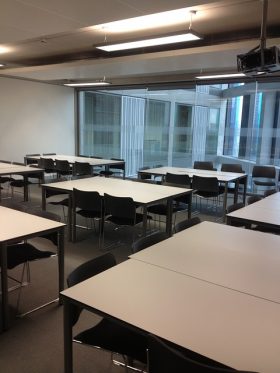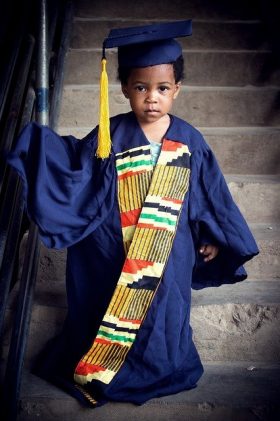Special education can be confusing for parents. There is so very much to know. For example, what if a student has a lot of trouble, and the school offers a “Special Day Class” aka SDC? Is this an appropriate or good school placement?

What Is a Special Day Class?
First, a “Special Day Class” aka SDC is basically a self-contained classroom with a special education instructor and various support personnel, such as aides. An SDC is usually located in a comprehensive/regular school, but is separate from the main student body.
Many students placed in an SDC are there for the entire school day. Sometimes students may be mainstreamed for lunch or physical education, or as otherwise decided by their special education team (IEP- Individualized Education Program team).
SDC students do not usually change classrooms for subjects, unless they leave to go to mainstream classes for instruction at some point.
An SDC is the most restrictive placement for a special needs student physically located in regular public schools (e.g. as opposed to non-public schools), as it is an isolated classroom where no general education interaction occurs.
Why Is A Student Placed In a SDC?
Students are placed in Special Day Classrooms by their IEP team to allegedly address their unique needs and help them advance. Often SDC’s will be promoted to parents as places that are really great with so much support for the student that they will be educated and do well.
Are SDC’s Appropriate?
It depends. SDC’s widely vary in appropriateness.
It depends on the student themselves, the staff in the SDC, and the other students in the SDC as well. It depends on the range of grade levels in the SDC.
Also important is what is being taught in the Special Day Class? Are the students receiving individualized instruction at their grade level or doing busy work all day?
I have heard some positive things about SDC classes when they are specialized, such as classes for autistic students, but these are usually SDC’s specifically designed for a certain group of students to directly address their unique needs, and the students have similar needs.
However, often I encounter other general-type SDCs, which can be a disaster.

Opinion on SDCs
My opinion on SDCs is the following:
SDCs which focus on one or two grade levels are better than ones that cover many grade levels of disabled students across e.g. five grade levels.
SDCs which focus on a certain type of disability and tailor the SDC to that disability are much better, as they can provide the unique services that student population needs.
I am not fond of multi-grade level types of SDCs where many students with highly varying disabilities are warehoused.
Why Don’t You Like Some Special Day Classes?
Unless the SDC is developed for a specific, closely related group (e.g. fourth and fifth grade autistic students), and set up to address the group of students with very similar needs, they are more like warehouses than classrooms.
Warehouse Special Day Classes
I call SDCs with many students from divergent grades with very different disabilities “warehouse SDCs.” (this is not a legal term, I made it up)
Warehouse SDCs tend to have students with many divergent needs, e.g. a physically disabled student who can learn well, but needs specialized supports, to a student who has extreme behavior needs who is very difficult to control, to a developmentally delayed student.
In warehouse SDCs the students who have the loudest interactions get the most attention and the quiet students tend to get ignored.
Unfortunately, I think most public school SDCs are these warehouse-type of SDC classrooms.
Students Tend to Not Receive Typical Instruction
In a warehouse SDC, as students are from many grade and skill levels, e.g. first through sixth grades, how can they receive proper instruction and keep up with their general education peers? They cannot.
Often SDC student classwork is very simple and far below the student’s grade level. This is despite the fact the student could do higher level work. Usually there is little to no homework.
My theory of why SDC students are given busy work, is that no teacher can instruct kids at 6 different grade levels at a time. And, when a student has something they can do easily (even if it will not advance them academically) the SDC teacher does not have to help that student and can instead go assign more busy work to someone else.
Unless an SDC classroom has a one-on-one teacher for every student, instructing them at their grade level, SDC students cannot keep up with their general education peers as they just don’t get enough instruction or challenge.

Students Can Get Stuck in SDCs And Never Get Out
Due to the lack of grade level or instruction which will advance them, it is very difficult for any warehouse SDC student to leave an SDC and transition back to the mainstream/general education classroom. This is because the student in an SDC will become further and further behind compared to general education peers, due to lack of instruction at their grade level.
They just are not keeping up with the “regular” classes or state standards, and thus can rarely transition back into the mainstream classrooms as later they don’t have adequate skills, as these have not been taught to them in the SDC.
If a student sits in SDC class for 2 years, doing work that is about a quarter of a what the regular grade will do (for example, an SDC student that learns one quarter of second grade skills during their second grade year, if they are lucky), the SDC student cannot rejoin his peers later, say in third grade, as he has become further behind.
SDC’s Are Not Held to General Curriculum Standards
Warehouse SDCs usually do not have a curriculum that applies to all students present. Each student has “individualized” curriculum, and also has IEP goals that the SDC instructor may work on. The students basically have modified curriculum which can be far different from regular classrooms.
Special day classrooms do not keep pace with the general education classrooms and a fourth grade SDC student may not cover any subject listed in typical fourth grade state standards, due to his or her disability and IEP Plan.
It is easy to hide that special day class students are not advancing, as school staff can just blame the disability (as opposed to the lack of instruction or work below a student’s level). In other words, they can say “Student did not keep up, as he is disabled.” With this, it can be missed by parents that the student actually was not receiving adequate instruction or help.
SDC’s Can Be Poorly Controlled
Despite things IEP team members may tell parents about the high staff to student ratios in SDCs and how great these are, I have heard a lot of negative stories about them, particularly the warehouse SDCs.
Sometimes I hear about students who are ignored, or who are watching movies all day, who can’t read despite reading at home before, or I hear about students who escalate violently as the staff fail to follow the students Behavior Support Plan (BSP).
Stories abound as well of students being harmed or mistreated by staff or other students in the classroom. Some students who do not have behavior needs, but are stuck in a class with students who do, may pick up negative behaviors of the other students in the classroom.
If a student is nonverbal and in an SDC, they may experience abuse but not be able to communicate about it. How do you prove something happened in a self-contained classroom with little oversight but from a special education instructor plus a couple aides. It is not often that an aide will report on their boss.

Alternatives to SDCs
There are many alternatives to SDCs. Even if a student has a variety of needs, the student can be mainstreamed with an aide. Or, they can be mainstreamed part of the day with resource classes (special ed class which is less restrictive than an SDC) and supports the other portion.
There may also be good non-public schools (NPS) out there which may have far better structure and support in place. These NPSs, however, may be hard to find depending on where you live.
Sometimes it may be found that students can be wrongly placed in SDCs and that their issues may stem from lack of instruction in early years, which is only exacerbated in the special day class.
Always Look at the Proposed SDC First
Parents should always try to inspect any SDC placement being proposed, meet the teacher, see the aides and their interactions with students if possible, prior to agreeing to the placement. Sometimes parents can be surprised, and not in a good way, if they don’t check the SDC class out first, and a student will later pay the price.
Special education lawyer Michelle Ball helps parents with SDC issues, classroom placement problems, IEP and 504 meetings, non public schools and other special education issues. As a student attorney, Michelle helps parent across California including in Fresno, Sacramento, Roseville, Davis, Woodland, Citrus Heights, Folsom, San Diego, San Francisco, and many more locales.

